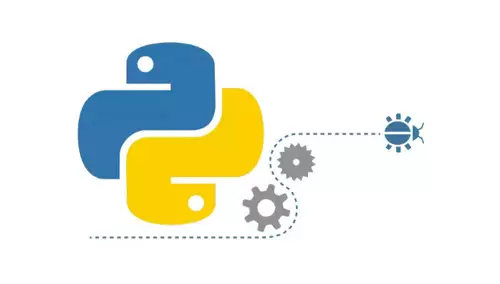Frameworks greatly simplify the life of developers by offering a clear structure for the application development process. They help get rid of small tasks and problems, reducing development time and allowing you to focus more on application logic.
And no matter how experienced a developer you are – they are all easy to learn, the main thing to remember is that choosing the best framework depends on the specific tasks of the project. Thus, one framework is better suited for some tasks, the other – for others.
TOP-6 Frameworks for Python Developers
So, let’s move on to the top six Python development frameworks that you should master:
1. Django
This web framework is considered to be the best and most popular in Python. It allows you to make development simple, code clean, and master fast. Django supports the core MySQL, SQLite, PostgreSQL, and Oracle databases, but other drivers can be used with other drivers. Django’s features are its authentication, URL routing, templating engine, an object-relational mapper (ORM), and database schema migration (Django v.1.7+).
If you choose Django, you don’t have to worry about the lack of features. You get everything you can expect from this framework, from a templating engine to object-relational mapping. And best of all, it’s free and open source.
2. Pyramid
Pyramid is a completely open-source framework for building Python applications. Its main goal is to do as much as possible with as little difficulty as possible. Pyramid has a very good ability, it works well with both large applications and small ones. It’s great for single-file applications, and it’s also great for URLs, configuration expansion, testing, and data documentation. This framework is simple and minimalistic.
It is best suited for those involved in API development as well as prototyping and development of large web applications such as CMS. It is also open source and completely free.
3. Flask
Flask is essentially a micro-framework, and as such, it focuses more on ease of use than on features. It takes less time to install and configure than other frameworks. This framework was inspired by the Sinatra Ruby frame. The main idea behind Flask is to help build a solid foundation for web applications. It has some useful features. For instance, it has a built-in development server and a fast debugger, Jinja2 templating, support for secure cookies, and the ability to connect any ORM.
Best for web developers who want best practices, rapid prototyping, and standalone applications.
4. Bottle
The bottle is a very lightweight framework and fits in just one file. Despite its minimalism, Bottle provides quite ample opportunities, which are 100% enough for small and medium-sized projects.
It includes routing, for clean URLs, the strength of this “framework” is templates. The “bottle” utilities provide convenient access to data forms, file uploads, headers, and other HTTP-related metadata. Has a built-in HTTP development server that supports fapws3, Bjoern, GAE, CherryPy, and any other HTTP server that supports WSGI.
It’s ideal for prototyping, learning how to organize web frameworks, and building simple applications.
5. Twisted
Twisted is an event-driven networking engine written in Python and released freely under the MIT license. It is very fast, but not suitable for traditional web application development. If you decide to do something related to low-level programming, then feel free to choose Twisted. Runs on Python 2, with a constantly evolving subset of tools running on Python 3.
This framework is built on top of deferred (the mechanism by which the asynchronous architecture works). In addition, it is free and open-source.
6. Tornado
This is not only a framework but also an asynchronous networking library that was originally developed for the FriendFeed aggregator. It uses a non-blocking network I/O. Also, it solves the C10k problem (meaning it can handle 10,000+ concurrent connections if properly configured).
All this makes it an excellent tool for building applications that require high performance and tens of thousands of concurrent users. In a tornado, you will find built-in support for user authentication, a non-blocking HTTP client. Moreover, the implementation of third-party authentication and authorization schemes. This framework is a cross between Django and Flask.
Conclusion
Python is a universal programming language. You can use it in various types of projects.
Thus the Python infrastructure is capable of high performance. So the language is used for highly loaded sites that constantly interact with millions of users. Instagram, Facebook, Dropbox, and Netflix teams work with Python. And this is the best confirmation of its advantages.

Petr is a serial tech entrepreneur and the CEO of Apro Software, a machine learning company. Whenever he’s not blogging about technology for itechgyan.com or softwarebattle.com, Petr enjoys playing sports and going to the movies. He’s also deeply interested in mediation, Buddhism and biohacking.

